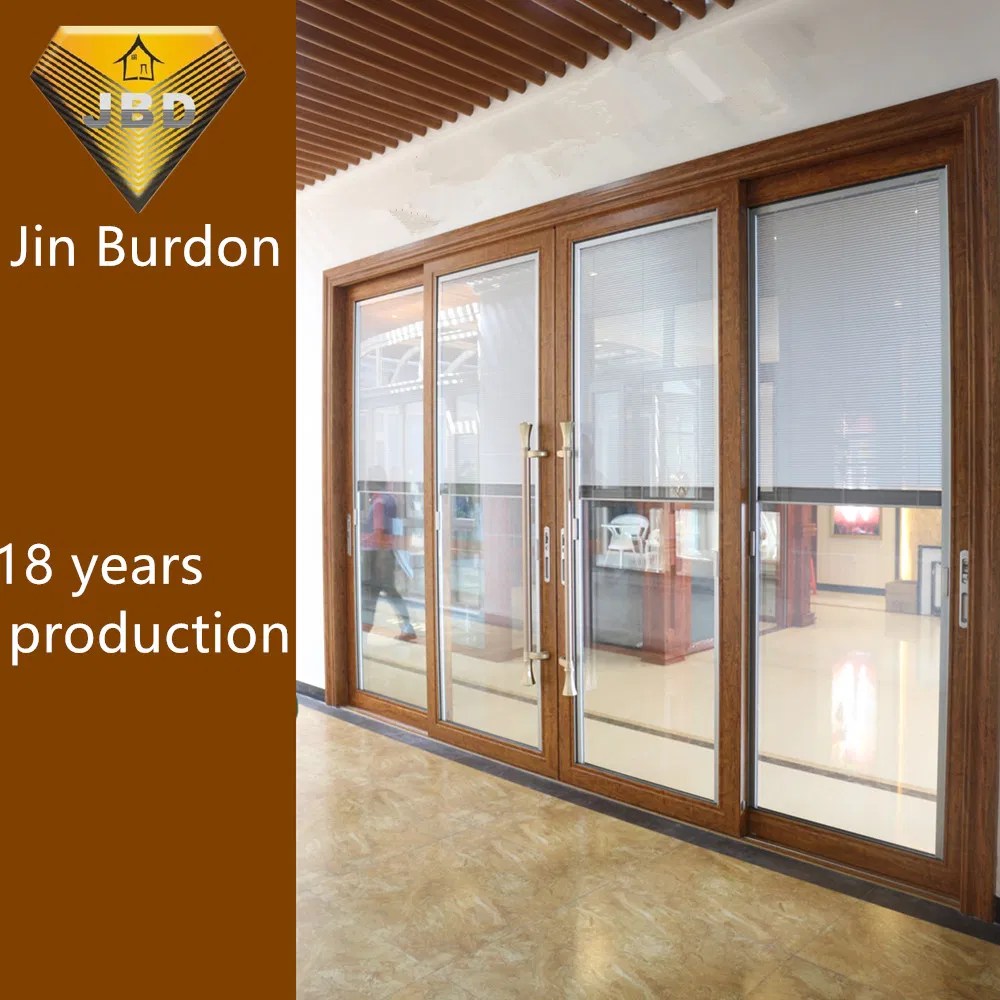Soundproof glass sets the stage for creating quieter, more peaceful environments. It’s a versatile solution for everything from home offices to recording studios, offering different levels of sound reduction. Understanding the various types, their properties, and installation methods is key to making the right choice for your needs.
This guide dives deep into the world of soundproof glass, exploring its design, applications, and the science behind its effectiveness. We’ll cover everything from the different types of glass available, like laminated and double-glazed options, to the factors affecting sound transmission and the costs involved.
Introduction to Soundproof Glass
Soundproof glass is designed to significantly reduce the transmission of sound, making it an effective solution for noise control in various applications. Its primary characteristic is its ability to minimize unwanted noise penetration while allowing for sufficient light transmission. This is achieved through specialized construction techniques and materials, offering a balance between acoustic performance and visual clarity.Different types of soundproof glass are available, each with varying levels of sound reduction and performance characteristics.
Understanding these differences is crucial for selecting the appropriate glass for specific noise reduction needs. The effectiveness of soundproof glass stems from the fundamental principles of soundproofing, which involve reducing the transmission of sound waves through the glass panel.
Types of Soundproof Glass
Various types of soundproof glass are available, each with its own strengths and weaknesses. Choosing the right type depends on the specific sound reduction requirements and other factors like cost and aesthetic considerations.
- Laminated Glass: Laminated glass consists of two or more layers of glass bonded together with a thin, strong interlayer. This interlayer significantly reduces the transmission of sound by absorbing and dispersing sound waves. It’s commonly used in windows, doors, and other applications where impact resistance and sound reduction are important. A notable example of this type is in automotive windshields where the interlayer helps protect occupants from shattering glass.
- Double-Glazed Glass: Double-glazed glass involves two panes of glass separated by an air gap. This air gap acts as an effective sound barrier, reducing sound transmission by creating an impedance mismatch that dissipates sound energy. The air gap and the layers of glass create a better sound barrier compared to a single pane of glass.
- Triple-Glazed Glass: Similar to double-glazed glass, triple-glazed glass utilizes three panes of glass with two air gaps. This multi-layered approach further enhances sound reduction capabilities compared to double-glazed options. Triple-glazed windows are often used in areas with high levels of external noise, such as near busy roads or airports.
Soundproofing Principles
Soundproofing glass works by employing several key principles to minimize sound transmission. These include:
- Impedance Mismatch: The air gap between the glass panes creates an impedance mismatch, meaning the sound waves encounter a change in their propagation medium. This change causes the sound energy to be reflected or absorbed by the air gap, effectively reducing its transmission. This concept is similar to how a wall can reduce sound.
- Absorption and Dispersion: The interlayer in laminated glass absorbs and disperses sound waves, preventing them from traveling through the glass. This is analogous to how acoustic panels in a recording studio absorb sound.
Comparison of Soundproof Glass Types
| Type | Features | Benefits | Drawbacks |
|---|---|---|---|
| Laminated Glass | Two or more glass layers bonded with an interlayer | High impact resistance, excellent sound reduction | Can be more expensive than other types, may slightly reduce light transmission |
| Double-Glazed Glass | Two panes of glass separated by an air gap | Good sound reduction, relatively affordable | May not offer the same level of sound reduction as laminated or triple-glazed options |
| Triple-Glazed Glass | Three panes of glass with two air gaps | Superior sound reduction compared to double-glazed, excellent thermal insulation | Most expensive option, can be bulkier |
Applications of Soundproof Glass
Soundproof glass isn’t just a fancy feature; it’s a practical solution for a wide range of environments where noise reduction is critical. From the quiet concentration needed in a home office to the controlled acoustic environment of a recording studio, soundproof glass plays a crucial role in creating desirable spaces. Its effectiveness varies depending on the specific application and the level of sound reduction required.Soundproof glass, with its ability to significantly minimize noise transmission, finds use in a variety of settings, each with its own particular soundproofing needs.
The design and construction of the glass, often involving multiple layers and special coatings, are tailored to address these unique requirements. Understanding these needs is crucial for selecting the right type of soundproof glass for each application.
Residential Applications
Residential settings, from homes to apartments, often benefit from soundproof glass to mitigate noise from traffic, neighbors, or even pets. Implementing soundproof glass in walls or windows can significantly improve the quality of life for residents by creating a more peaceful and quiet environment. Examples include soundproof windows in bedrooms to block out city noise, or soundproof walls in home offices to minimize distractions.
The desired sound reduction in residential settings varies considerably, depending on the specific noise source and the desired level of quiet.
Commercial Applications, Soundproof glass
Commercial spaces like offices, restaurants, and conference rooms often need soundproof glass to maintain a productive and professional atmosphere. Soundproof glass in offices can help to reduce distractions from hallways or other areas, enhancing employee focus and productivity. In restaurants, soundproof glass partitions can help to separate different sections or minimize noise transmission to adjacent areas. Sound reduction requirements for commercial spaces typically focus on reducing background noise levels, ensuring clear communication, and maintaining a comfortable acoustic environment.
Studio Applications
Recording studios and music practice rooms demand exceptional soundproofing. The controlled acoustic environment is critical for capturing high-quality audio recordings or for practicing musical instruments without disturbing others. Soundproof glass, in conjunction with other soundproofing measures, can effectively isolate sound within the studio space. The specific sound reduction requirements for studios are typically very high, often demanding complete isolation from outside noise and the ability to precisely control internal reflections and reverberations.
Industrial Applications
Industrial settings, like factories and workshops, often need soundproof glass to reduce noise pollution and protect employees. Soundproof glass in industrial settings can help to mitigate noise levels from machinery and equipment, reducing the risk of hearing damage and creating a safer and more comfortable work environment. Sound reduction needs in industrial settings vary greatly depending on the type of machinery, the level of noise it produces, and the regulations for noise levels in the workplace.
Soundproof Glass Application Table
| Application | Space Type | Sound Reduction Needs | Glass Type |
|---|---|---|---|
| Residential Bedrooms | Residential | Reduce traffic noise, neighbor noise | Laminated, Double-Glazed |
| Office Partitions | Commercial | Reduce background noise, maintain privacy | Laminated, Triple-Glazed |
| Recording Studio Walls | Commercial/Studio | Complete isolation from external and internal noise | Acoustic Panels with Double-Glazed or laminated glass |
| Factory Equipment Enclosures | Industrial | Reduce noise from machinery, comply with safety regulations | Heavy-duty laminated glass, sound-absorbing materials |
Performance and Properties of Soundproof Glass
Soundproof glass isn’t just about aesthetics; its effectiveness hinges on its physical properties. The thickness of the glass and its composition directly influence its ability to block sound waves. Understanding these factors is crucial for selecting the right glass for a specific sound reduction need.
Impact of Glass Thickness and Material Composition
The thickness of the glass plays a significant role in sound transmission. Thicker glass generally provides better sound insulation. This is because sound waves encounter more material to absorb and scatter before they can pass through. The material composition also matters. Denser materials like laminated glass with a dense interlayer or glass reinforced with specific metals offer greater resistance to sound transmission compared to standard window glass.
Furthermore, the specific type of glass used, such as tempered or insulated glass, can impact the overall performance.
Relationship Between Glass Properties and Sound Reduction Effectiveness
The sound reduction effectiveness of glass is directly linked to its ability to absorb, deflect, and dampen sound waves. Denser glass, with more mass per unit area, is more effective at absorbing sound energy. The material’s density, and the way it’s constructed, determine the extent to which sound waves are absorbed and scattered before they can pass through.
The presence of an interlayer, as in laminated glass, further contributes to sound reduction by creating additional barriers and causing sound waves to dissipate.
Measurement Methods for Soundproofing Performance
Soundproofing performance is quantified by measuring Sound Transmission Loss (STL). STL is expressed in decibels (dB) and represents the difference between the sound intensity entering and exiting the glass. Specialized equipment, like soundproof chambers, is used to measure the sound transmission loss across different frequencies. These measurements are standardized to ensure accurate comparisons across different glass types.
Sound Transmission Characteristics of Different Glass Types
Understanding the sound transmission characteristics of various glass types is crucial for choosing the appropriate solution. Different types of glass exhibit varying degrees of sound reduction, influenced by thickness and composition.
| Glass Type | Thickness (mm) | Sound Transmission Loss (dB) | Frequency (Hz) |
|---|---|---|---|
| Single-pane window glass | 4 | 25-30 | 1000-2000 |
| Laminated glass | 8 | 35-40 | 1000-2000 |
| Double-glazed unit | 10-12 | 38-45 | 1000-2000 |
| Triple-glazed unit | 15-18 | 45-55 | 1000-2000 |
| Acoustic glass | 8-10 | 48-55 | 1000-2000 |
Installation and Maintenance of Soundproof Glass

Source: made-in-china.com
Installing soundproof glass properly is crucial for maximizing its performance. Incorrect installation can lead to significant sound leakage, negating the benefits of the glass’s sound-dampening properties. Careful attention to detail and adherence to the manufacturer’s guidelines are vital for achieving the desired sound reduction.Proper installation techniques ensure the glass seals effectively, minimizing air gaps and preventing vibrations that can transmit sound.
This meticulous approach also contributes to the long-term durability and structural integrity of the glass, preventing issues like cracking or damage over time.
Installation Procedure
Careful adherence to a step-by-step installation process is paramount to achieving optimal soundproofing. Following the correct procedure significantly reduces the risk of sound leakage and ensures the glass’s long-term effectiveness.
- Preparation: Thoroughly clean the installation area to remove debris, dust, and any other contaminants. This ensures a solid foundation for the glass and prevents issues with adhesion or seal integrity. Measure the area precisely to ensure the glass fits correctly and that all necessary materials are available.
- Framing: Install the framing according to the manufacturer’s specifications. This includes properly securing the frame and ensuring accurate measurements. Using appropriate fasteners and sealants is critical for preventing gaps and ensuring a strong bond between the frame and the glass.
- Glass Placement: Carefully position the soundproof glass within the frame. Ensure proper alignment and use shims or spacers to maintain the correct distance between the glass and the frame. Double-check measurements to guarantee accuracy. If the glass is multi-layered, ensure the layers are correctly aligned.
- Sealing: Apply sealant along the edges of the glass and frame, filling any gaps or crevices. This crucial step prevents sound from escaping and provides an airtight seal. The type of sealant should be suitable for the specific type of glass and climate.
- Inspection and Finishing: Inspect the installation for any gaps, cracks, or imperfections. Ensure the glass is securely held and the sealant is properly applied. If necessary, make adjustments to ensure a perfect seal. Clean any excess sealant.
Tools and Materials
A comprehensive list of necessary tools and materials is essential for a successful soundproof glass installation. The proper tools ensure precision and efficiency throughout the process.
- Measuring tape, level, and pencil for precise measurements and alignment.
- Safety glasses and gloves for protection during installation.
- Drill, screwdriver, and appropriate fasteners for securing the frame.
- Sealant gun and suitable sealant for filling gaps.
- Shims or spacers for maintaining correct spacing between glass layers and frame.
- Clean cloths for cleaning the installation area and wiping away excess sealant.
Comparison of Installation Methods
Different installation methods offer varying levels of benefits and drawbacks. Understanding these differences is essential for selecting the most suitable approach.
| Installation Method | Steps | Tools Required | Benefits/Drawbacks |
|---|---|---|---|
| Frame-Based Installation | Framing, glass placement, sealing, inspection | Framing materials, glass, sealant, measuring tools, safety gear | Stronger structure, better soundproofing, but more complex |
| Adhesive-Based Installation | Cleaning, applying adhesive, positioning glass, curing | Adhesive, measuring tools, safety gear, cleaning supplies | Simpler, potentially faster, but adhesive type affects soundproofing |
| Specialty Installation | Depending on the type of soundproof glass | Specific tools for specific glass types | Highly customized, often specialized |
Cost and Benefits Analysis
Soundproof glass, while offering significant advantages, comes with varying price tags. Understanding the costs associated with different types and the long-term financial benefits is crucial for informed decision-making. This analysis examines the price range of various soundproof glass options and explores the potential for return on investment, including energy savings.
Comparing Costs of Different Soundproof Glass Types
Different soundproof glass types utilize varying materials and construction techniques, which directly impact their cost. Laminated glass, a common soundproofing solution, involves bonding multiple layers of glass with a polyvinyl butyral (PVB) interlayer. This method is generally less expensive than other options like double- or triple-pane insulated glass units (IGUs). IGUs, featuring multiple panes of glass separated by air gaps, offer enhanced soundproofing but typically come with a higher price tag due to their complex construction and specialized manufacturing.
The choice between these types often hinges on the desired level of sound reduction and the overall budget.
Long-Term Financial Benefits
Soundproof glass, beyond its immediate cost, often yields significant long-term financial benefits. Reduced energy consumption is a primary advantage. By minimizing sound transmission, soundproof glass can help maintain a more comfortable indoor temperature. This translates to lower energy bills over time, particularly in noisy environments. This cost savings is amplified in commercial spaces or homes situated near busy roads or industrial areas.
A case study of a commercial building in a city centre, for example, found that the use of soundproof glass reduced energy consumption by 15% over a three-year period.
Return on Investment Examples
The return on investment (ROI) for soundproof glass varies depending on the specific application, the initial cost, and the prevailing energy rates. In residential settings, soundproof glass can improve the quality of life by reducing noise pollution, leading to a more peaceful living environment. This often translates to increased property value over time. In commercial spaces, soundproof glass can enhance worker productivity by reducing noise distractions, leading to higher profits.
Implementing soundproof glass in a recording studio, for instance, can prevent unwanted external noises from affecting recordings, potentially leading to higher-quality audio output.
Estimated Costs of Soundproof Glass Solutions
This table provides estimated costs for different soundproof glass solutions, including installation, per square meter. These costs are estimates and may vary based on specific project requirements and geographic location.
| Glass Type | Cost per Square Meter | Installation Cost | Total Cost |
|---|---|---|---|
| Laminated Glass (2 panes) | $50 | $20 | $70 |
| Double-Pane IGU (with sound-dampening coating) | $75 | $25 | $100 |
| Triple-Pane IGU (with sound-dampening coating) | $100 | $30 | $130 |
Future Trends and Innovations
The soundproofing glass industry is constantly evolving, driven by the need for quieter and more sustainable building solutions. Emerging technologies are poised to revolutionize how we design and utilize soundproof glass, leading to significant advancements in performance and efficiency.
Emerging Materials
New materials are being explored to enhance soundproofing capabilities beyond traditional glass types. These advancements promise improved sound absorption and transmission reduction. Polycarbonate and laminated glass with specialized interlayers are prime examples, offering varied levels of sound insulation. The incorporation of nano-engineered coatings and composite materials is also showing promise in improving soundproofing performance.
Advanced Design Approaches
Innovative design approaches are transforming soundproof glass, creating more effective and aesthetically pleasing solutions. The use of advanced acoustic modeling and simulations is enabling engineers to optimize glass thicknesses, shapes, and layering strategies for superior sound insulation. This results in more precise designs with less material consumption, leading to lower costs. Variable thickness designs, incorporating thicker sections strategically placed in critical areas, are another example, enabling targeted sound reduction without compromising aesthetics.
Acoustic Metamaterials
Acoustic metamaterials, engineered to manipulate sound waves, hold significant potential for future soundproof glass. These materials, while still in the research phase, could potentially lead to dramatic improvements in sound insulation, reducing noise transmission significantly compared to conventional methods. Their application to glass could involve incorporating these metamaterials into the glass’s structure or as an external layer.
Integration with Smart Technologies
Smart technologies are increasingly being integrated into building designs, and soundproof glass is no exception. The integration of sensors and actuators within the glass structure could allow for dynamic soundproofing. For example, the glass could adjust its properties in response to external noise levels, automatically increasing sound insulation when needed. This integration could also lead to real-time monitoring of sound transmission, enabling proactive maintenance and reducing long-term costs.
Visual Representation of Potential Future Designs
Imagine a double-pane soundproof glass window, where the inner pane is made of a polycarbonate material with embedded sound-absorbing nanoparticles. The outer pane could be a laminated glass with a specialized, acoustic-absorbing interlayer. This design combines the strength and aesthetics of traditional glass with the enhanced soundproofing properties of advanced materials. Another example might involve a curved, multi-layered glass structure.
The curved design would distribute sound waves more effectively, reducing reflection and scattering. These designs emphasize the integration of advanced materials and optimized structural geometries for exceptional soundproofing performance.
Last Recap
In conclusion, soundproof glass is a powerful tool for managing noise in various spaces. By considering the specific needs of your application and understanding the different types and their performance characteristics, you can achieve a significantly quieter environment. Whether you’re looking to block out traffic noise in your home or reduce reverberations in a recording studio, soundproof glass provides a practical and effective solution.
The future of soundproofing looks promising with ongoing innovations in glass technology.
FAQs
How much does soundproof glass cost?
The cost of soundproof glass varies significantly depending on the type of glass, its thickness, and the installation method. Factors like the desired level of sound reduction and the size of the area also influence the overall price. Expect to find variations based on material, installation complexity, and region.
What are the different types of soundproof glass?
Common types include laminated glass, double-glazed units, and even specialized options incorporating multiple layers or specific coatings. Each type has unique properties that affect its sound reduction capabilities and overall cost.
Can soundproof glass reduce all types of noise?
While soundproof glass is effective at reducing many types of noise, its effectiveness depends on the frequency of the sound. Different glass types perform better at certain frequencies, so consider the specific noise you want to reduce when selecting the right glass.
How thick does soundproof glass need to be?
Thickness plays a significant role in sound reduction. Generally, thicker glass provides better sound insulation, but the exact thickness needed depends on the desired sound reduction level and the type of noise being addressed.
- Soundproof Glass Your Guide to Quieter Spaces - June 2, 2025
- Energy-efficient windows Smarter Choices - June 2, 2025
- How to Calculate the Right Amount of Outdoor Lighting for My Property - February 21, 2025









